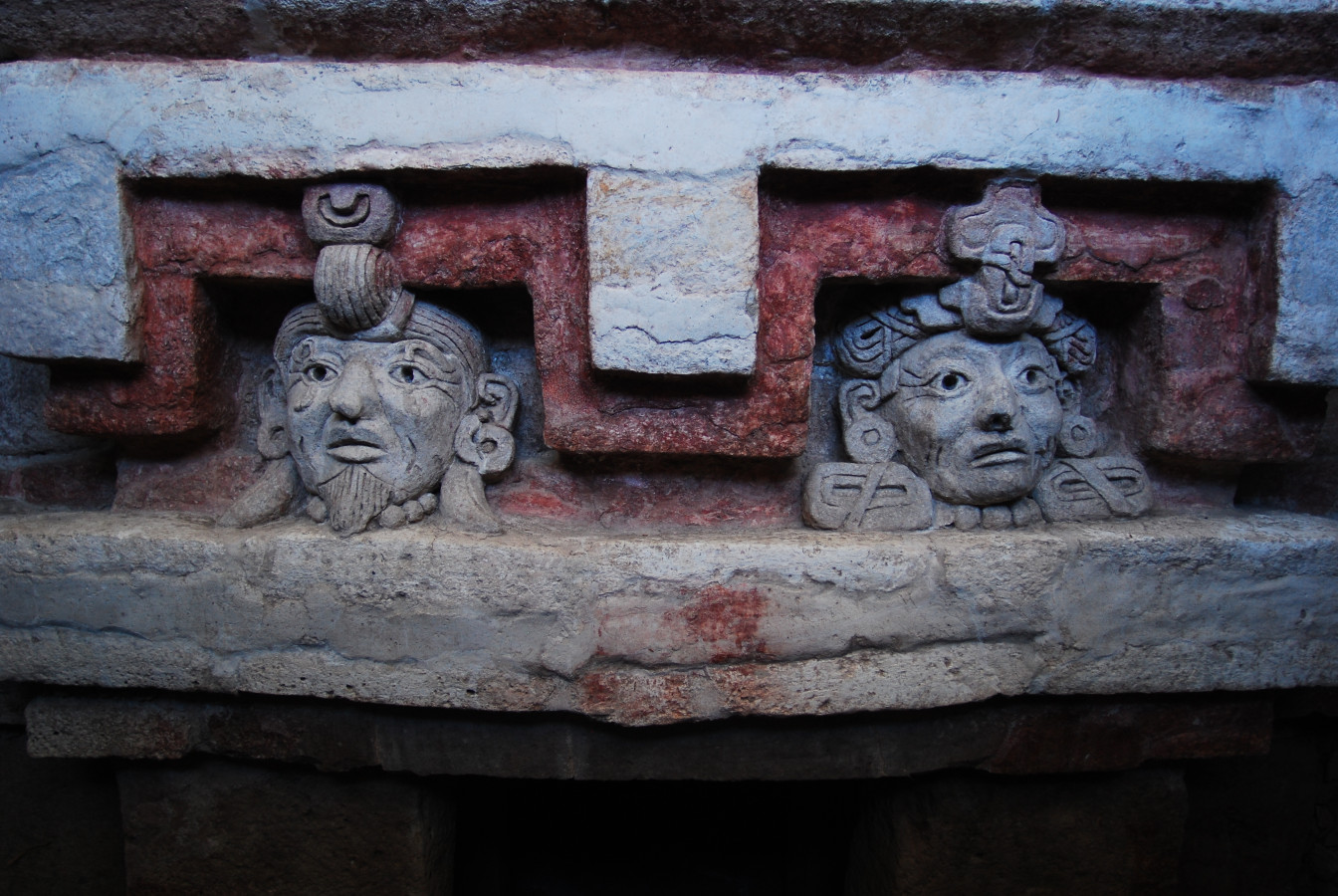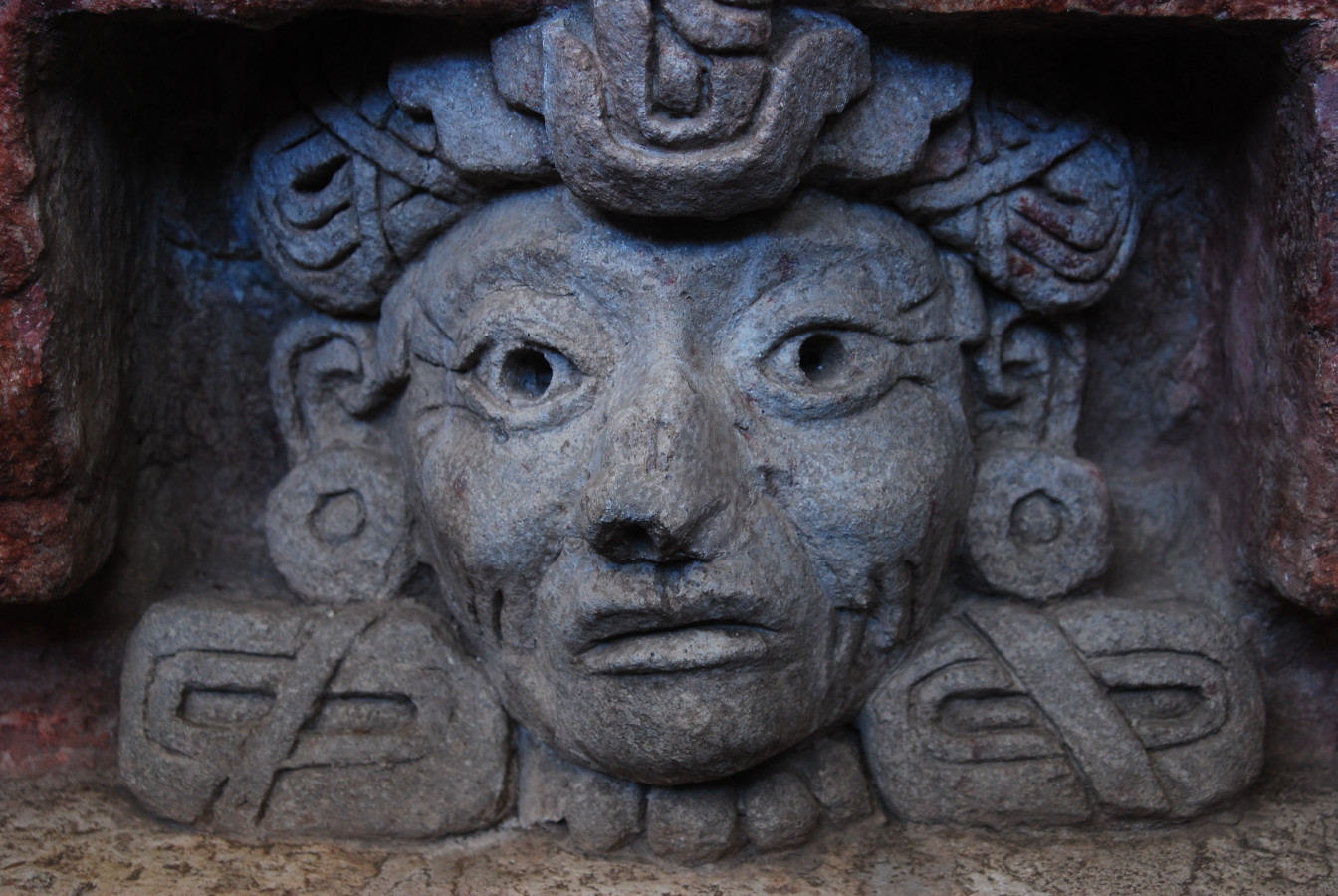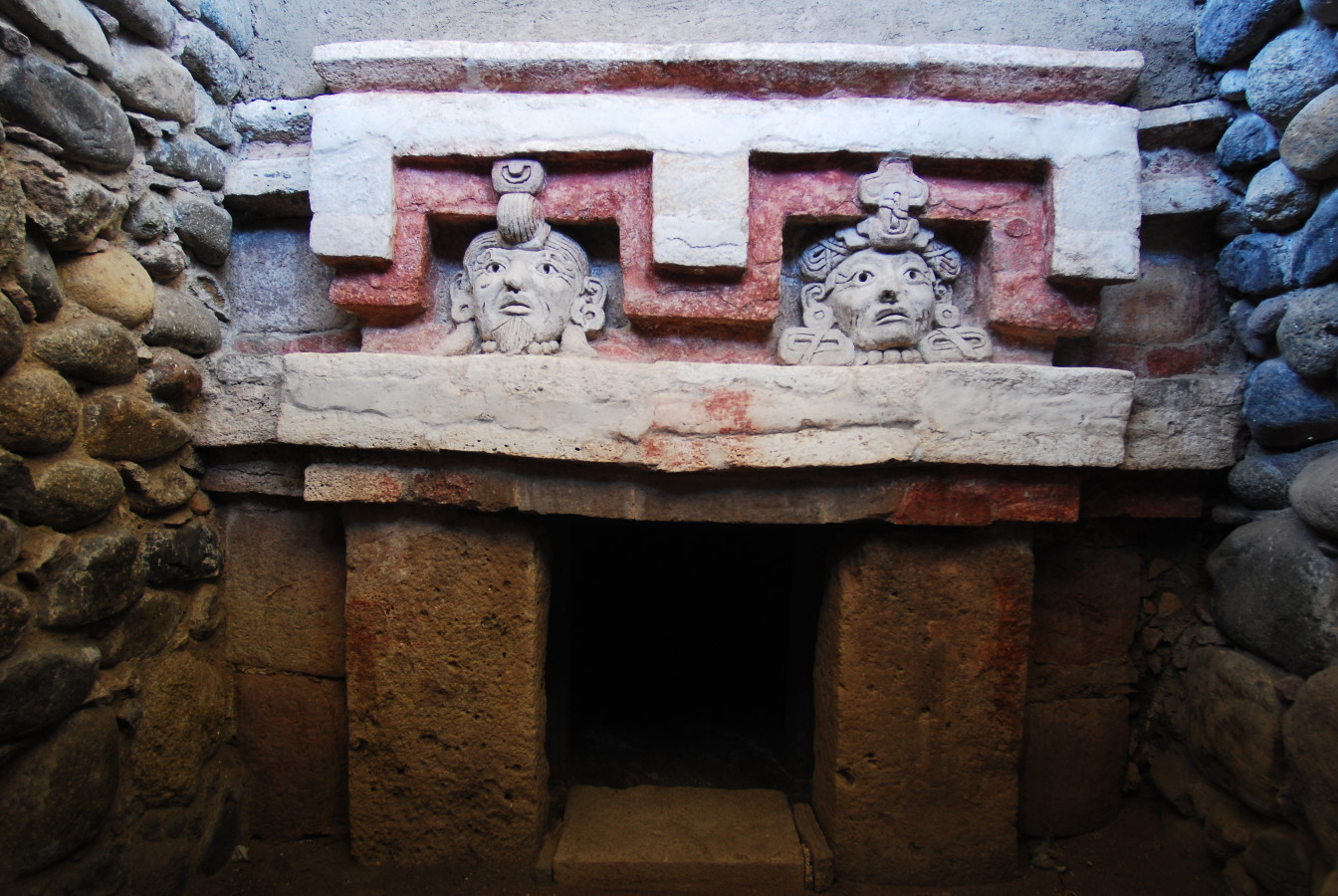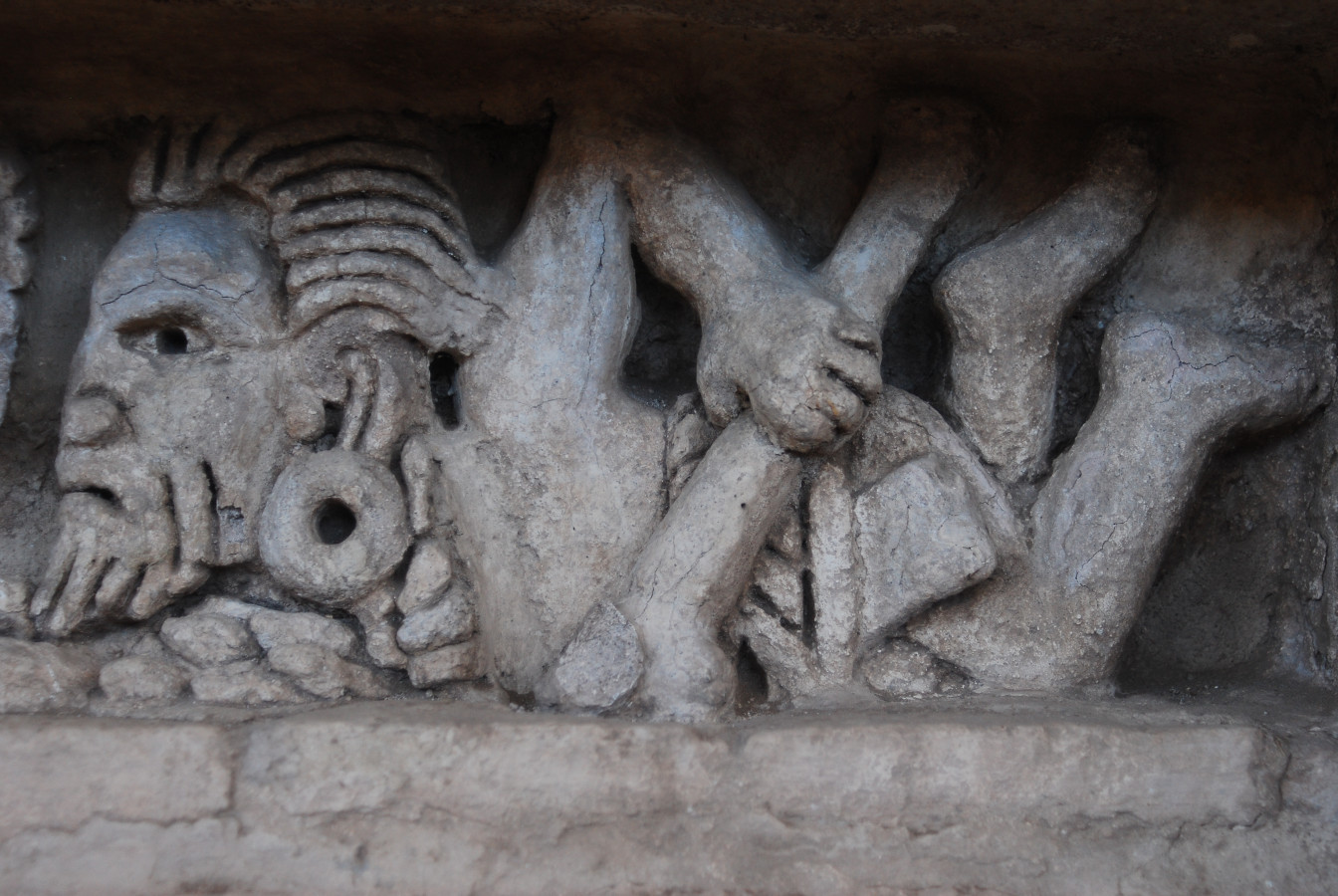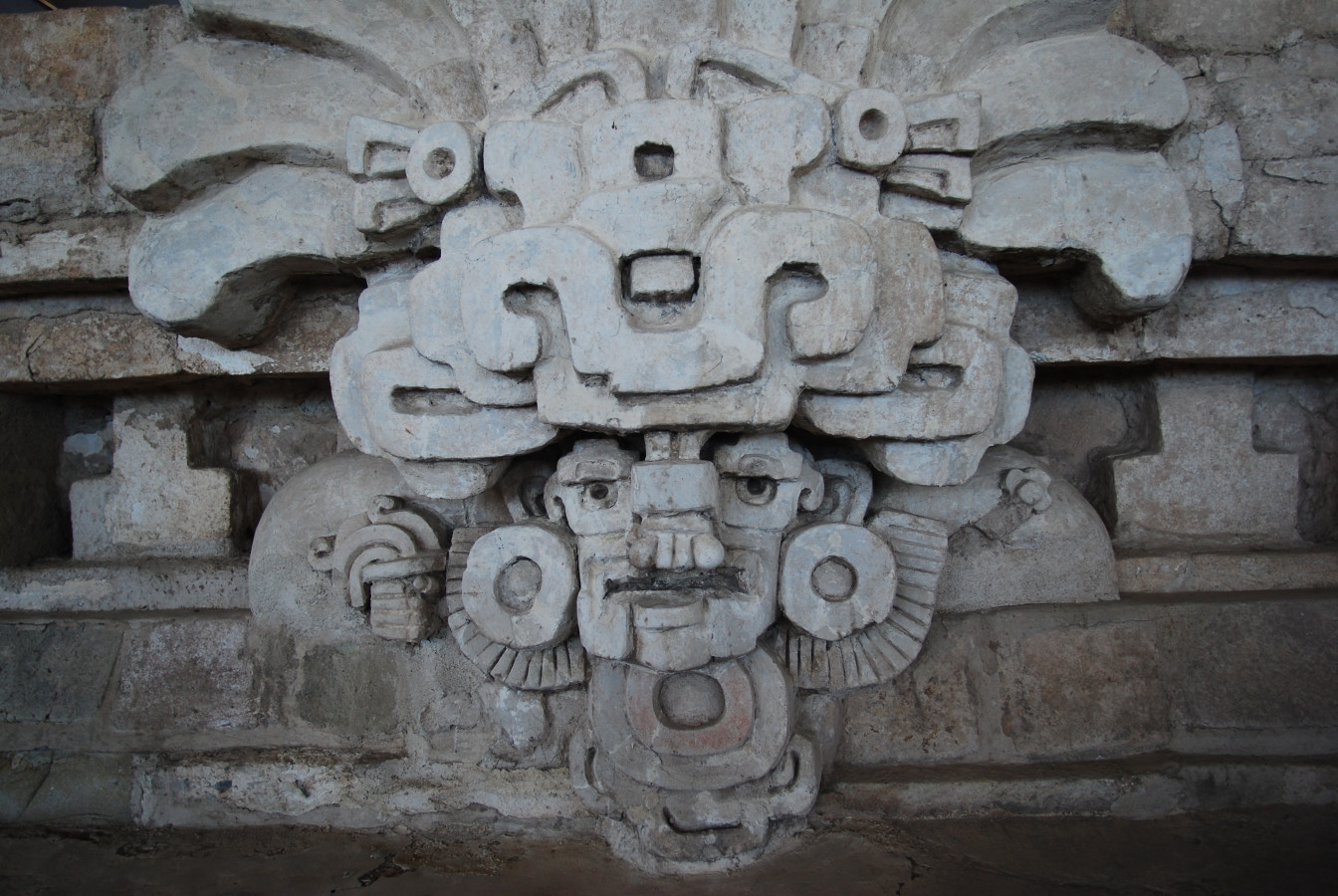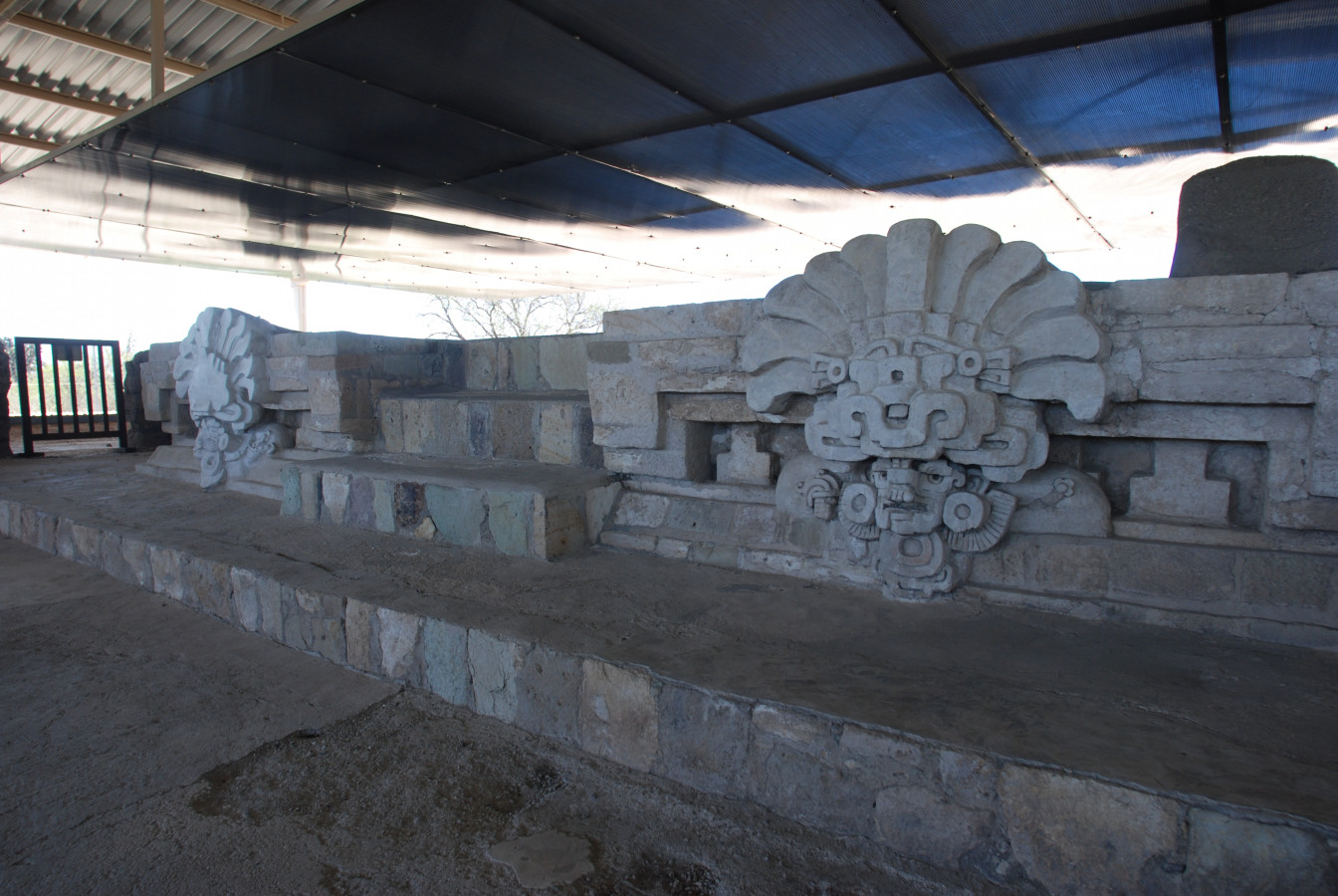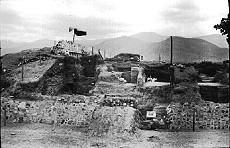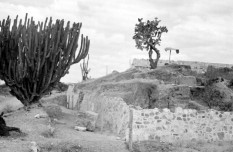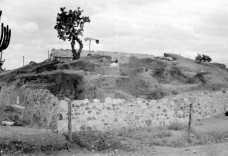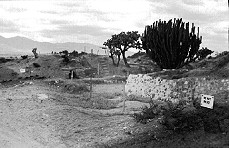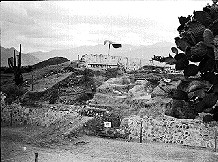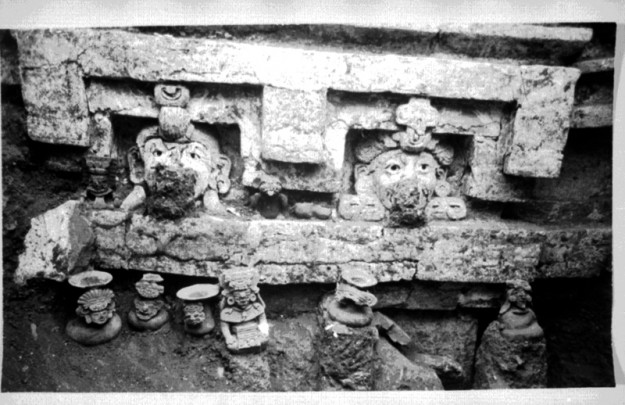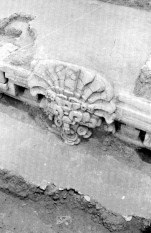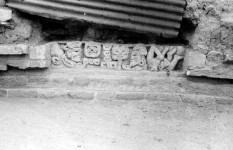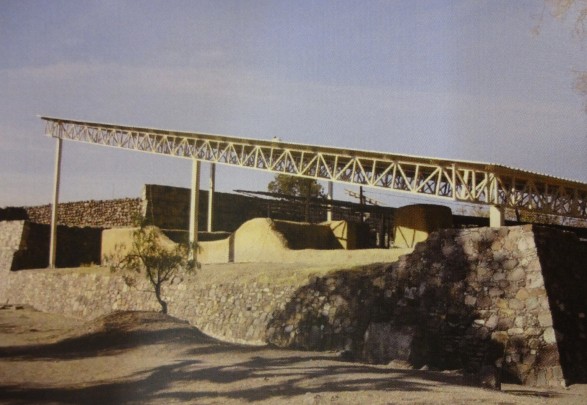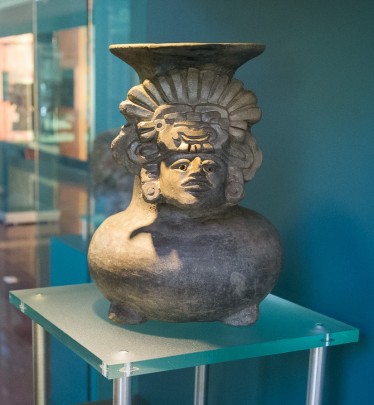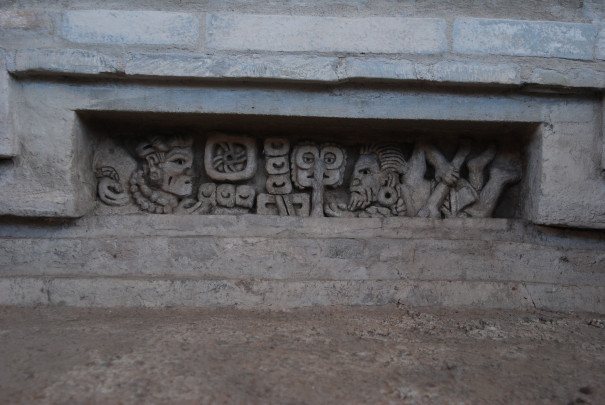Lambityeco
Hills of the still or hollow hill
Its main activity was trade and production of salt. Contemporary with Monte Albán, the Zapotec lineage established here left a historical artistic bequest of magnificent stucco reliefs and artefacts made of bone, as well as mural paintings that can still be seen.
About the site
The archeological site of Lambityeco is 15 miles southeast of Oaxaca city and just over a mile from the city of Tlacolula via the international highway that goes to the isthmus of Tehuantepec. Lambityeco has a very important place in the archeological story of the Central Valleys of the state of Oaxaca on account of important archeological finds and the singular importance of its earthern architecture, which is a good example from the pre-Hispanic era of people's efforts to adapt to the resources available in the environment, and this was achieved harmoniously at Lambityeco.
The name of Lambityeco comes originally from Zapotec and it has two interpretations according to the official records:
• “Yeguih” river of the guavas
• “Lambi” which appears to be a Zapotec corruption of the Spanish “alambique,” a reference to the pot stills, or alembics, used for boiling salt water to obtain salt, while “pityec” is the Zapotec word for mound.
Lambityeco therefore means the “alembic mounds.” This latter interpretation fits with the presence today of salt beds to the south of the archeological site, and it is assumed that the archeological site was a center for the production and exchange of this product, furthermore it is thought that it accounted for 90% of the salt production in the Oaxaca valley between the years 600 and 750.
Research indicates that the actual extent of the site is 290 acres, including 197 mounds corresponding to different building stages, which make it possible to identify the periods of occupation from 700 BC until its apogee between 600-750 AD. The mounds have been classified according to their size, giving more than 80 mounds classified under 1 meter (3 feet 3 inches) in height, while there are 90 mounds between one meter and 10 meters (32 feet 9 inches). At least two exceed 10 meters in height.
This period coincides with the great flourishing of Monte Alban, when Lambityeco served as an important center of production and an alternative city market of the Zapotec state. One hundred and forty-one of the 197 mounds demonstrate evidence of occupation, covering a residential area of 160 acres, with a population estimated at 3,000 persons.
The Zapotec lineage established here was typified by artistic richness which was expressed in decorative architectural features such as stucco reliefs and mural paintings, as well as in artifacts worked in bone, also in the variety of funerary urns recovered from the known burials. After Monte Alban ceased to be a dominant power in the valley of Oaxaca, Lambityeco and other small settlements reestablished political power and control over less extensive territories, but like other ethnic groups of Mesoamerica, they used marriage alliances between the different lineages, which helped ensure the political and economic stability of the region.
The name of Lambityeco comes originally from Zapotec and it has two interpretations according to the official records:
• “Yeguih” river of the guavas
• “Lambi” which appears to be a Zapotec corruption of the Spanish “alambique,” a reference to the pot stills, or alembics, used for boiling salt water to obtain salt, while “pityec” is the Zapotec word for mound.
Lambityeco therefore means the “alembic mounds.” This latter interpretation fits with the presence today of salt beds to the south of the archeological site, and it is assumed that the archeological site was a center for the production and exchange of this product, furthermore it is thought that it accounted for 90% of the salt production in the Oaxaca valley between the years 600 and 750.
Research indicates that the actual extent of the site is 290 acres, including 197 mounds corresponding to different building stages, which make it possible to identify the periods of occupation from 700 BC until its apogee between 600-750 AD. The mounds have been classified according to their size, giving more than 80 mounds classified under 1 meter (3 feet 3 inches) in height, while there are 90 mounds between one meter and 10 meters (32 feet 9 inches). At least two exceed 10 meters in height.
This period coincides with the great flourishing of Monte Alban, when Lambityeco served as an important center of production and an alternative city market of the Zapotec state. One hundred and forty-one of the 197 mounds demonstrate evidence of occupation, covering a residential area of 160 acres, with a population estimated at 3,000 persons.
The Zapotec lineage established here was typified by artistic richness which was expressed in decorative architectural features such as stucco reliefs and mural paintings, as well as in artifacts worked in bone, also in the variety of funerary urns recovered from the known burials. After Monte Alban ceased to be a dominant power in the valley of Oaxaca, Lambityeco and other small settlements reestablished political power and control over less extensive territories, but like other ethnic groups of Mesoamerica, they used marriage alliances between the different lineages, which helped ensure the political and economic stability of the region.
750 a.C. - 1200
Preclásico Medío a Posclásico Temprano
800 - 1200
Clásico Tardío a Posclásico Temprano
Did you know...
- The representations of figures which can be seen in Building 195 show the most important people who lived and were buried in this place.
- In Structure 190 there are two masks of Cocijo modeled in stucco.
- In 2016 a carved stone with a representation of a crocodile was excavated and retrieved. This can now be seen in Building 190.
Practical information
Temporarily closed
Monday to Friday from 10:00 to 16:00 hrs.
$75.00 pesos
Se localiza en el Valle de Tlacolula, perteneciente a los valles centrales de Oaxaca.
From the city of Oaxaca take the Pan-American Highway 190 towards Mitla. The site is located approximately 31 km southeast of the Oaxacan capital, and 2.5 km before reaching Tlacolula.
Services
-
+52 (951) 515 33 46, +52 (951) 515 04 00
-
This email address is being protected from spambots. You need JavaScript enabled to view it.
-
FACEBOOK
Directory
Jefe de Zona Arqueológica
Leobardo Daniel Pacheco Arias
This email address is being protected from spambots. You need JavaScript enabled to view it.. mx

